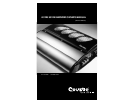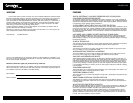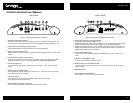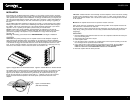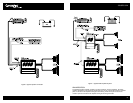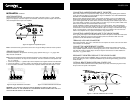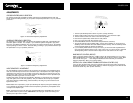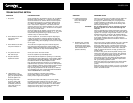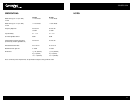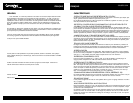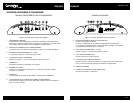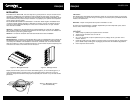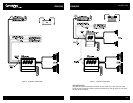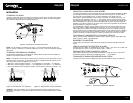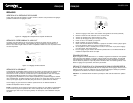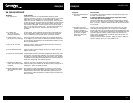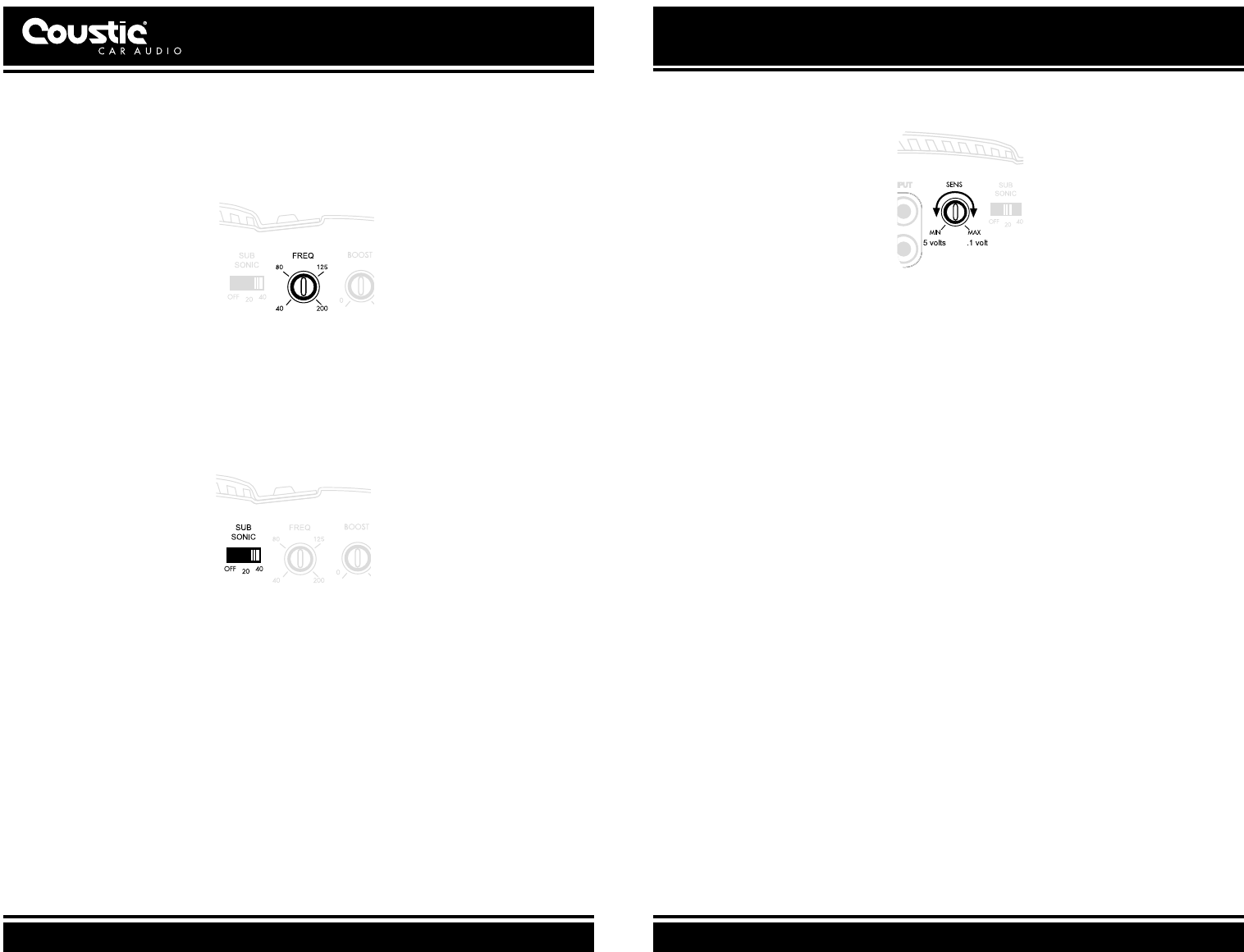
COUSTIC.COM
13
ADJUSTMENTS
CROSSOVER FREQUENCY SELECTION
The low-pass continuously adjustable crossover frequencies are selectable between 40Hz and
200Hz. Adjust the setting according to your speaker component specification or to your particular
preference.
Figure 12: Crossover Frequency Adjustment
SUBSONIC FREQUENCY SELECTION
The advantage of a subsonic filter is to maximize the amplifiers output when a specifically tuned
subwoofer system is needed. For example, if your subwoofer system is designed to play 40Hz -
80Hz only, the amplifier distributes 100% of its power for only that frequency range. The subsonic
frequency settings are 20Hz or 40Hz. Select the setting according to your prefered subwoofer sys-
tem specification or to your particular preference.
Figure 13: Subsonic Frequency Adjustment
INPUT SENSITIVITY ADJUSTMENT
The Input Sensitivity Control is located on the Input Panel. The objective of input sensitivity adjust-
ment is to match the output of the source unit with the input of the amplifier. The output voltage of
individual source units can vary. For example, some source units have an output of 200 mV and
others have 5 Volts or more. To cater to these variations, the DB amplifier has an adjustable input
sensitivity level that ranges from 100 mV to 5 volts.
Adjusting this control requires some experimenting. Basically, you want all the gain at the begin-
ning of the system, NOT at the end (amplifier). Turn your headunit UP and keep your amplifier
gains at the minimum possible setting (counter-clockwise). This will give you the best sound and
signal-to-noise ratio.
Besides better sonic reproduction, proper input sensitivity also helps to prolong the reliability span
of your amplifier by eliminating excessive internal temperature generated by incompatible source
unit output and amplifier input.
Note : Turning the input gain UP does NOT indicate MORE power. Just MORE noise. The input
gain control IS NOT a power control. REMEMBER that the input gain control has nothing to do
with the power output of the amplifier.
Figure 14: Input Sensitivity Control
1. Turn the Input Sensitivity Control all the way down (counter clockwise).
2. Set the volume control of the source unit to approximately
2
⁄3 of its maximum output.
3. Turn the balance control of the source unit to its center position.
4. Leave the tone (bass/treble) controls at their usual position.
5. Play a CD or tape track with wide dynamic range.
6. Use the Bass Boost Control to enhance the bass performance (if desired).
7. To locate the optimum input sensitivity setting, ask the person assisting you to turn the Input
Sensitivity Control clockwise until audio distortion starts to develop. Turn the sensitivity control
counter clockwise slightly to minimize the distortion.
8. If you constantly switch between CD/tape and radio, you will need further adjustment since
radio output level differs from that of CD or tape. In this case, you need to locate a balanced
sensitivity setting which is best for both the output level of radio and that of CD or tape.
BASS BOOST CONTROL (BOOST)
Select a boost level between 0dB and +18dB to enhance the bass performance for your sound
system. BASS BOOST is NOT free! Every 3dB of boost costs you twice as much in power. Make
sure to set the final gains . . . after setting the Bass Boost to work best with your subwoofer/
enclosure combination. More is NOT always better!
SETTING UP & USING REMOTE SUBWOOFER GAIN CONTROL (R S)
If you are using the R S control, make sure to take this into account during set-up procedures of
the subwoofer amplifier. You should set the system up with the R S plugged in, and with the level
knob turned all the way down (counter clockwise).



